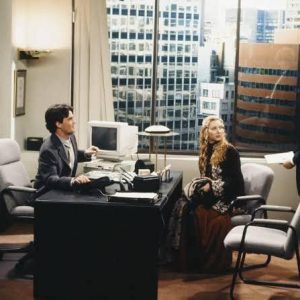The death of Matthew Perry, best known for his role as Chandler Bing in the television series Friends, has seen an outpouring of grief from fans and the Hollywood community.
His passing at age 54 has shocked both those who admired his acting work, as well as those who followed his efforts to bring awareness to the pains of addiction.

Tributes to Perry have understandably focused on his star-making turn on the incredibly popular television sitcom. Scenes, catchphrases, and his character’s lines have been lovingly repurposed across the internet to memorialise the gifted actor.
Meanwhile, many viewers have situated their recollections of Perry and the series within the context of their own experiences.
Viewers who came of age, or were the characters’ ages during the show’s original run, have reminisced about what the work of Perry and his co-stars meant to them at formative times in their lives. Newer viewers have similarly shared how important the series has been to them – their relationship with the show often beginning long after production ended.
For many, Friends was the television equivalent of the soundtrack to their lives.
To appreciate the staying power of the series for original and newer viewers alike almost 30 years since it debuted, we need to consider what functions television viewing serves and the bonds we form with its characters.
Enduring appeal

Part of Friends’ popularity lies in its timing. The show premiered in 1994, a period when network television was still dominant. By its end a decade later, while the power of the big television networks had eroded, the series had maintained an average of more than 20 million viewers each season.
The 2004 finale brought in a record-breaking 52.5 million viewers in the United States. The series then entered repeats around the world. It hasn’t left our screens since.
The late 90s and early 2000s have sometimes been referred to as the end of monoculture. While a contested and controversial idea because of, among other concerns, who was included and excluded on our screens, monoculture meant we watched many of the same things.
One of the most popular shows of its era, Friends brought people together. It was a show we watched with our families or friends, spoke about the next day with colleagues, and it provided a common connection. It allowed bonding with real friends as much as fictional ones.
Friends did not only reflect style of the time; it also frequently created it. Jennifer Aniston’s haircut, coined “The Rachel”, or Perry’s lovable smart-alecky cadence, typified with Chandler’s catchphrase of “Could I be any more…”, were endlessly imitated. I know I attempted to replicate Chandler’s sweater vests and light blue denim look. Participation provided viewers a sense of identity.
As people enter their 30s and 40s, they often gravitate towards the memories made during their formative adolescent and young adult years. So perhaps it’s no surprise Friends endures for original viewers as it represents – and was a part of – their lives at this important time.
Likeable characters

Television and other fictional media meet our needs for both pleasure and extracting meaning. We get excited, entertained and moved by television.
As part of this, we bond with fictional characters. We cannot help but empathise with them. A series like Friends with its characters and their combinations of breakups, makeups and other mishaps allowed us to safely use our empathy muscles to cheer on and sometimes commiserate with the group of six. It helped that each character was flawed but inherently likeable.
Fictional characters also allow us to experience lifestyles we might not otherwise. In the case of Friends, who didn’t want to live in a rent-controlled apartment like Monica’s, or regularly meet their supportive and funny pals for coffee at Central Perk? As a teen, I imagined such a world for myself in the not-too-distant future.
Younger generations might be more aware of how out-of-reach that lifestyle was, or find the show’s humour sometimes dated. But the idea of what the friends’ lifestyle represented – possibility, freedom, a chosen family – evidently still holds appeal.





